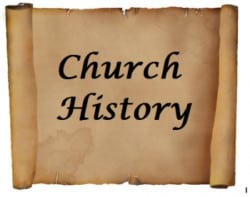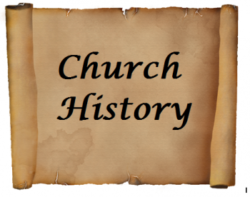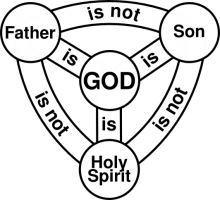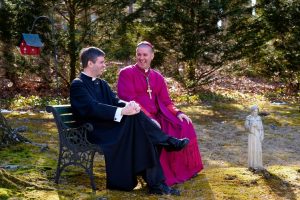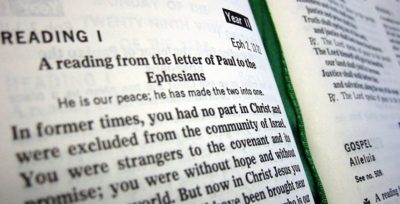Articles of Religion
ARTICLES OF RELIGION
The below gives a brief overview…
Monday, March 20, 2006 – Q&A: What are the Articles of Religion?
The article that started it all…
What are the Thirty-Nine Articles of Religion? Where do they come from? Are they important?
The Thirty-Nine Articles of Religion are the charter document of the Elizabethan Settlement and of the English Reformation. Adopted by the General Convention of the Protestant Episcopal Church on 12th September 1801, the Articles have a fascinating history. After some debate beginning at the first General Convention in 1792, the Articles were eventually attached to the 1789 Book of Common Prayer and were constitutionally embraced by the American Church as being representative of her mind. Years before, in 1553, the Church of England initially created, by the hand of Archbishop Thomas Cranmer, Forty-Two Articles, which were given under the seal of King Edward VI. The Convocation of Canterbury began work on a revision of the Forty-Two Articles in 1563; in 1571, under Queen Elizabeth, the English Parliament issued the newly-revised Thirty-Nine Articles. The Articles, a formal statement of the principles of the English Church’s reform, received the Royal Assent from the Queen on 29th May 1571. Ever since, they have been law in the English Church and Realm.
The Articles enshrine the classical Anglican theological position called the via media or ‘middle way.’ This golden mean of an Anglican doctrinal standard, it must be said, is certainly not a halfway house to Rome or Geneva. Rather, the via media of the Articles expresses in generous language a resourcement, a recovery of the teaching and doctrine of the early Church Fathers, that is, of Christian antiquity. The Articles therefore boldly articulate the vision of the Anglican theological paradigm: the Anglican Church claims to be a true Church of the Apostles and Fathers. The Anglican Church also claims to be continuous with the pre-Reformation Church of the ages as a Catholic Church which is primitive, patristic, and non-papal. And these claims make the Articles of Religion very important indeed.
They define the historic Anglican approach to matters of doctrine. For example, the Articles affirm the doctrine of Baptismal Regeneration (Article XXVII) and the doctrine of the Real Presence of the Body and Blood of Jesus Christ in the Holy Eucharist, while repudiating the medieval papal errors of transubstantiation and of eucharistic sacrifice independent of the one Sacrifice of our Lord (Article XXVIII and Article XXXI). Again, the Articles clearly affirm that there are seven sacraments which are channels of divine grace, but two only are generally necessary to salvation (Article XXV). They affirm the apostolic ministry of bishops, presbyters, and deacons while abolishing compulsory clerical celibacy (Articles XXXII and XXXVI). Justification by faith is approved (Article XI), while double predestination is corrected (Article XVII). Nothing can be found in the Articles which was not held by the Church of the first six centuries. That is precisely the Articles’ claim to fame.
Anglicanism has, as Archbishop Geoffrey Fisher of Canterbury once proclaimed, no faith of its own – only the Catholic Faith of the Catholic Creeds, without addition or diminution. The Articles present to us a Catholicism restored and reformed; nothing is necessary to salvation but that which is contained in and proved from Holy Scripture, and yet nothing is to be rejected which belongs to the legitimate Tradition of the early and undivided Church.
The Thirty-Nine Articles of Religion are hence not a confession or confessional statement. The Anglican Church has in fact never been a confessional Church, but, with the rest of the Apostolic Church, has always been a creedal Church. The Anglican branch of the Catholic Church, in union with the Eastern Orthodox and Latin Churches, adheres to the three great Creeds of undivided Christendom, the Apostles’, Nicene, and Athanasian Creeds. The Anglican Articles of Religion are unique; they were produced by the authority of the English Parliament in order to bring about some semblance of uniformity in a national Church housing many different theological schools of thought and opinion.
The Articles are thus Articles of Peace,’ bringing both uniformity and diversity to a comprehensive Church. They are boundaries within which Anglicans historically engage in theological exploration and thought, and are meant only to exclude the extremes of puritan protestantism on one hand and papalism on the other. The Articles seek to restore and emphasize ancient Christian orthodoxy, the Apostolic Tradition, as contained in Holy Scripture and lived-out in the early Church.Although clergy of the Church of England were once required to make a general assent to the Articles (as required by the Canons of 1604), our Church has never called them a confession. The American Church has never required subscription to them. We must always remember that the Articles are not, and never were intended to be, an exhaustive compendium of Anglicanism’s doctrine. They are neither a theological encyclopedia nor a complete statement of what Anglicans believe. Because they are historical in nature, they only address questions of doctrine which were disputed at the time of the Reformation.
The Articles are an historical document of great weight and importance, and are still authoritative for Anglicans. But the Articles have always been and must always be interpreted through the lens of the entire Book of Common Prayer. The Common Prayer Book as a whole is still the most authoritative source, aside from Holy Writ itself, for determining what Anglicans believe. Lex orandi, lex credendi: the law of prayer is the law of belief.
Though not binding in the same way the Creeds and Liturgy are, the Articles should still guide Anglicans in the theological enterprise. The Articles remind us of our past, and help to guide our future. Undoubtedly, they are a central feature of our Anglican patrimony.

